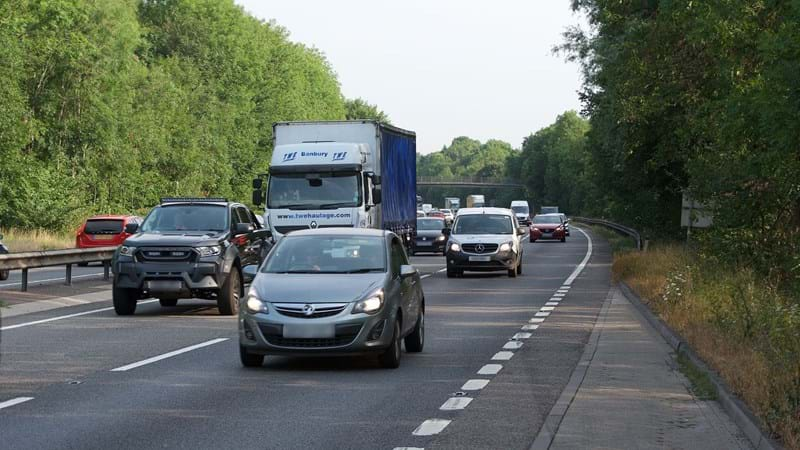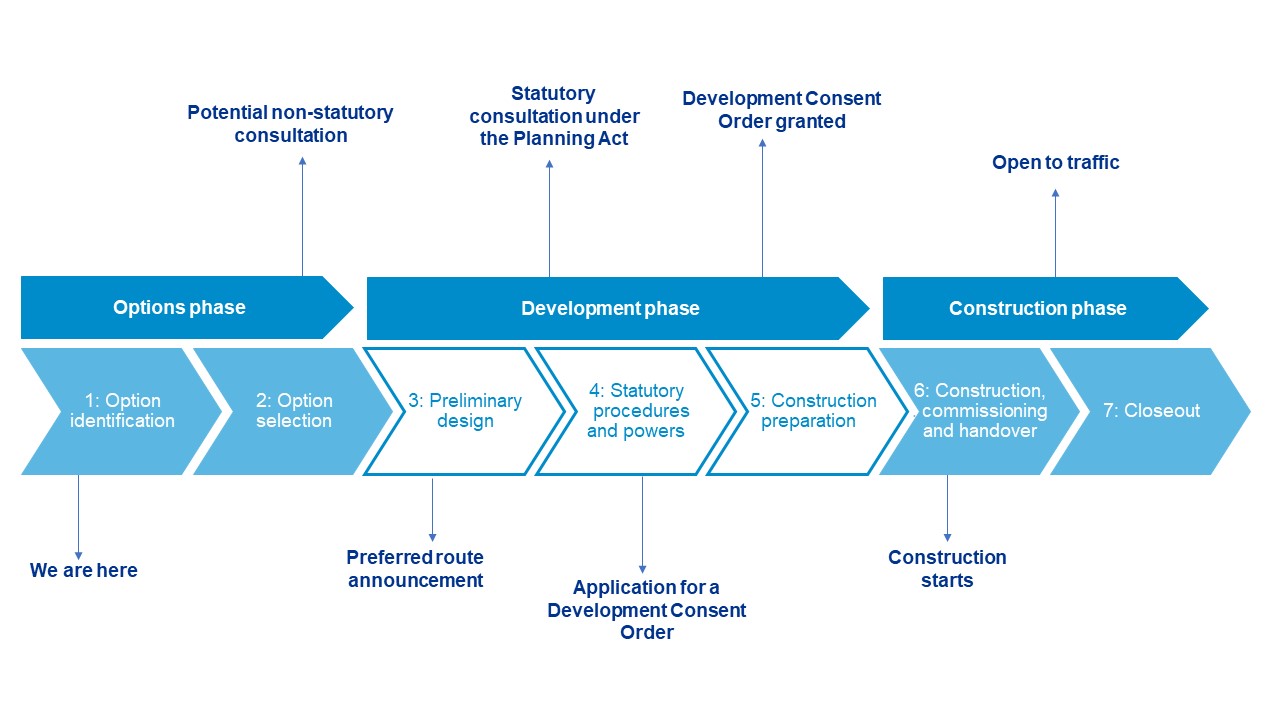The beginning of the A34 project
Published
03 Feb 2021
When we start a new project, like the A34 improvements north and south of Oxford, we’re often asked what work this actually involves and how long it will take.

Share this article
We know people are keen to understand how we develop projects and consider important factors like the environment and impacts on people and places. They also want to know more about what benefits road improvements can bring and when they can get involved and have their say.
For all our major projects, we follow a joint process with the Department for Transport. It’s called the Project Control Framework (PCF) and is made up of seven stages. This covers the whole development cycle from initial options right through to construction and project completion.
It’s a methodical and organised process and ensures that we deliver projects that support the needs of road users and local people in a cost effective and timely way.
At the start of the project, the Department of Transport set out a series of specific strategic objectives. These are the aims the project must seek to achieve. Assessments and decisions are made based on how well they can deliver these objectives.
We know that there are issues linked to congestion on the A34 around Oxford. Congestion on the road leads to unreliable journey times and affects safety. This disrupts people’s lives and their travel plans for both business and leisure. Our strategic objectives are based on addressing these challenges and improving journeys for everyone using the A34 between the M4 and M40.
Each stage of the PCF process plays an important role in the development cycle. The A34 improvements project, being a new project, is currently in stage one – option identification.
To develop options, we are looking at a wide range of factors. We’re considering current and likely future demands on the A34 including known plans for local growth. The area is a popular place to live and work and continues to attract businesses and people keen to be part of its success. As this happens, we expect local people and business to rely even more on the A34 for their journeys. We are also looking at connections to existing roads and junctions and how the A34 interacts with local roads.
We’re considering environmental features such as local heritage, areas valuable to wildlife, and the landscape. We’re looking at the needs of local communities and businesses in the vicinity of the A34 including air quality and noise. And we’re considering technical issues including safety and engineering requirements. We will look to develop options that seek to best balance all of these considerations and evaluate each one for value for money.
Of course, this takes time as it’s important we’re methodical and accurate in our work. We need to be sure we’ve considered all the potential impacts and the opportunities to create benefits as well as analysis costs. It’s therefore typical for stage one on a project of this size to take over a year.
Once we have completed our assessments, we will produce a shortlist of options. We’ll present our results and recommendations to the Department for Transport who will review our work and decide whether the project can proceed to stage two – option selection.
Consultation with stakeholders and local communities is an important part of our project development process. We consult with people as soon as we can in the process, when we have options to comment on. We’ll provide more information on that nearer the time should we proceed to that stage.
In the meantime, if you have any questions you can get in touch with the project team by emailing us at A34oxford@highwaysengland.co.uk. You can also sign up for updates on the project.
How we develop new projects

Options phase
- Option identification (we are here)
- Option selection (potential non-statutory consultation)
Development phase
- Preliminary design (preferred route announced and statutory consultation under the Planning Act)
- Statutory procedures and powers (application for Development Consent Order)
- Construction preparation (Development Consent Order granted)
Construction phase
- Construction, commissioning and handover (construction starts)
- Closeout
